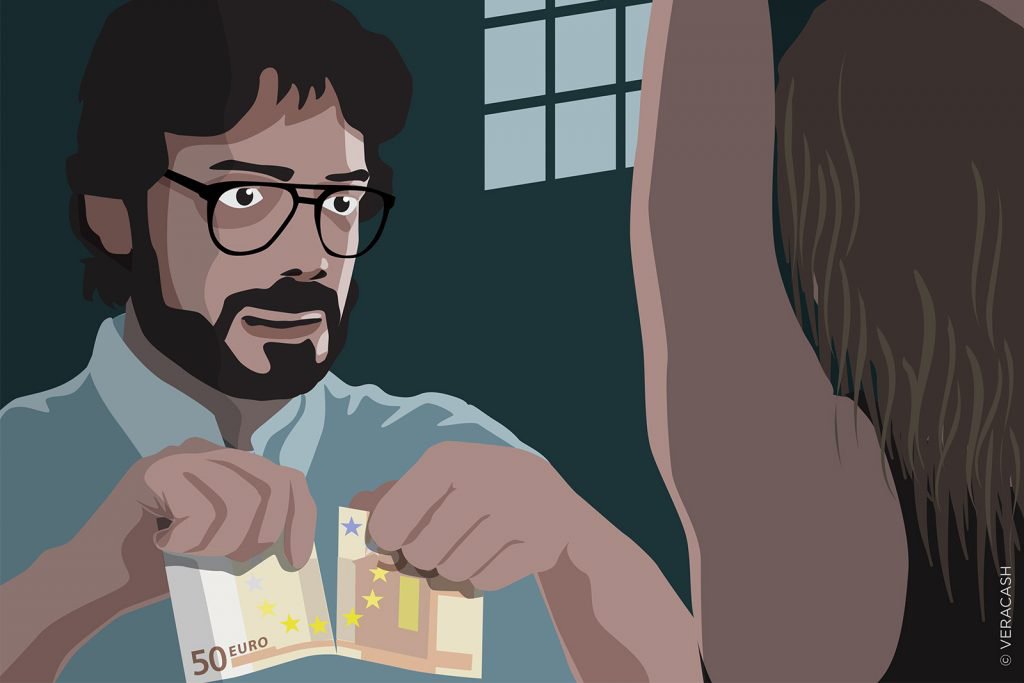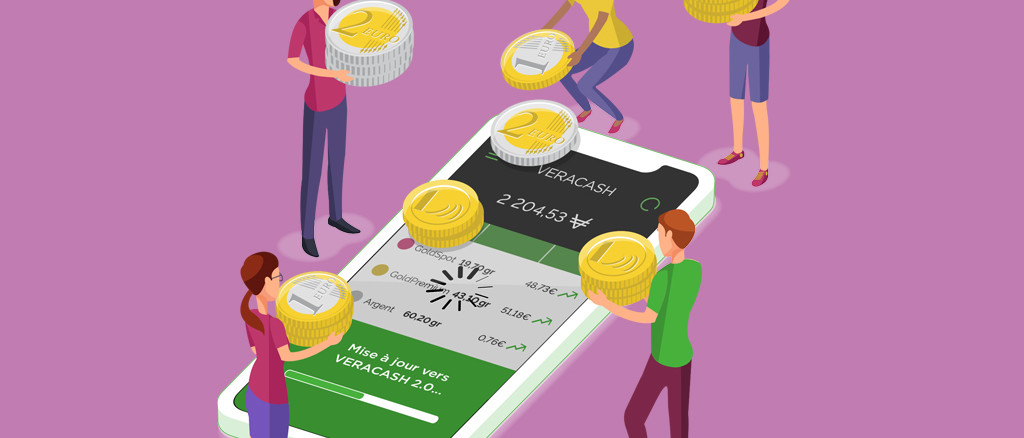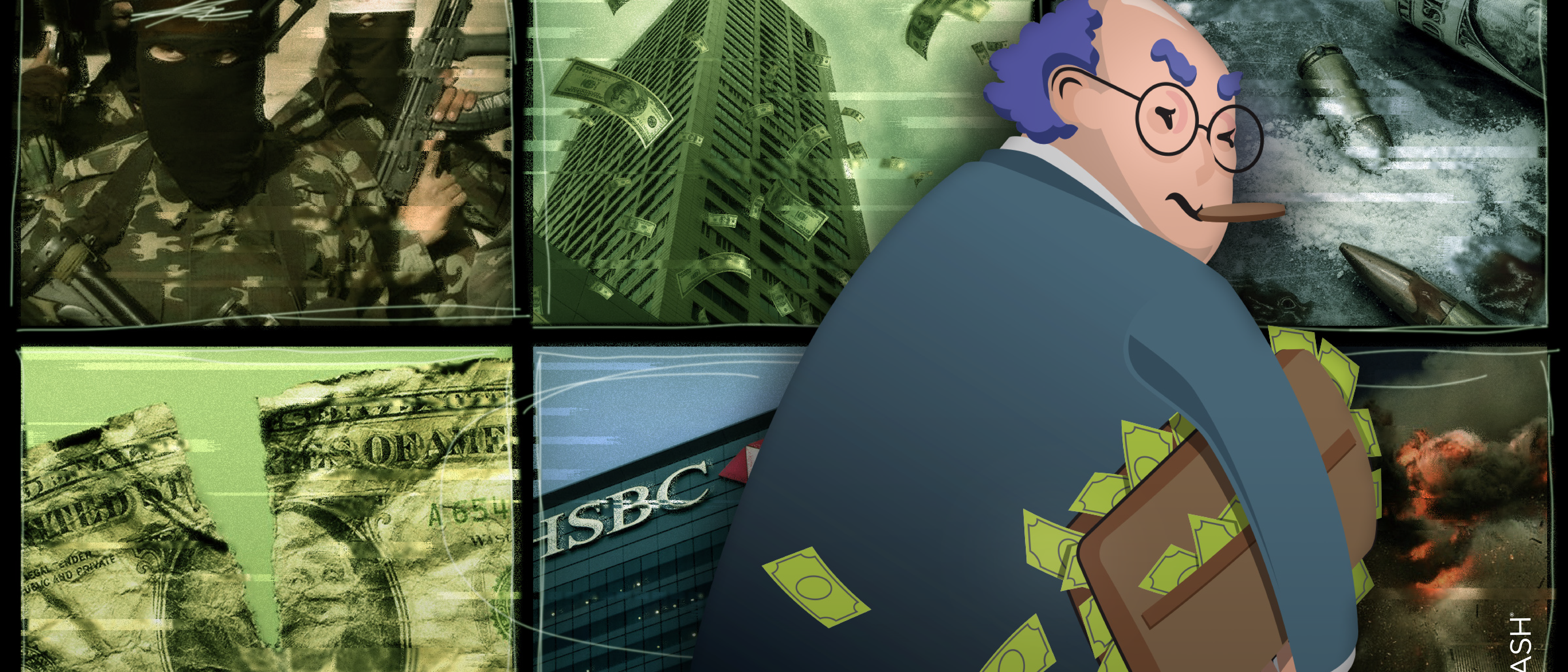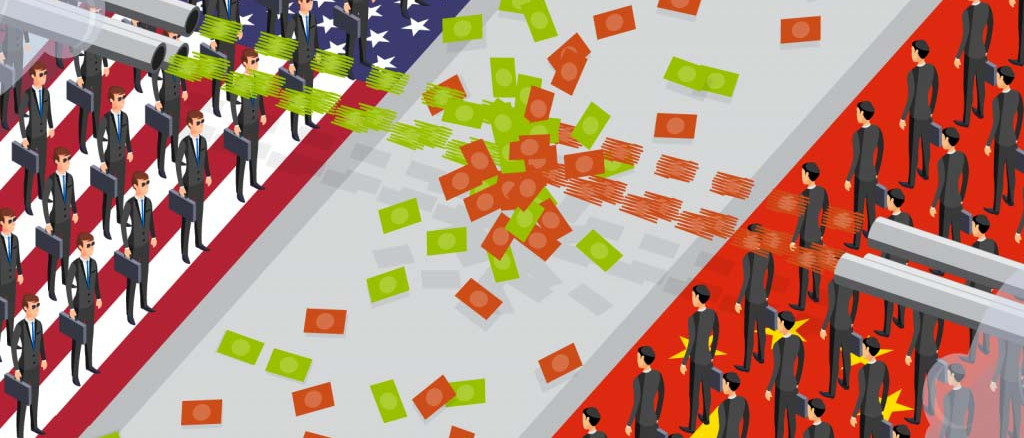[Spoiler Alert] Money Heist, a Spanish Netflix series whose Part 3 has just been released, is based on the workings of institutional finance. After attacking the ECB’s ‘liquidity injections’, the gang of robbers in red jumpsuits and Salvador Dali masks aim to destabilise the system by stealing the Bank of Spain’s gold. Perhaps this series should be screened in economics classes?
Sets ranging from the Royal Mint to the Bank of Spain
The big-hearted rogue is a well-known character in literature, theatre and film. We have Robin Hood, who came into being in 14th-century poetry; Arsène Lupin, the French gentleman thief; not to mention Aladdin.
Here, The Professor—the brains behind a gang of robbers code-named after big cities—plans to seize the Royal Mint of Spain and print billions of euros so that he can carry off a successful heist without stealing money from actual people. This makes the crime seem almost praiseworthy, because he’s perceived as a sort of anonymous Robin Hood 2.0. After a nearly successful attempt, the thieves return a few years later with their sights on the Bank of Spain, aiming to steal the 90 tonnes of gold bullion held in its vaults.
Liquidity injections from out of nowhere!
In a famous scene of a one-to-one conversation between The Professor and police inspector Raquel, he proclaims “In 2011, the European Central Bank made 171 billion euros out of nothing […] 185 billion in 2012; 145 billion euros in 2013”. He notes that the ECB called this “liquidity injections” and not theft. In his opinion, that liquidity was pulled “out of nowhere”.
Worse still, in his eyes, is that hundreds of billions of euros were given to banks, who did not then pass that on into the real economy in the form of personal or business loans. The Professor and his gang of robbers (Tokyo, Berlin and so on) want to inject the money they steal directly into the real economy. With this in mind, they decide to print several billion euro.
Fiction: Money Heist – reality: quantitative easing
His argument is largely true. Aside from the fact that the ECB did not actually run the printing press itself. That’s no longer necessary in a computerised society that is becoming increasingly cashless.
After the recession of 2008, the European Central Bank (and the Fed) launched a far-reaching campaign of buying up government bonds (i.e. state debt) from the banks. This is known as quantitative easing or QE. It involves exchanging securities for a line of credit. As a result, the banks found themselves with lots of lines of credit (euros receivable) on their balance sheets. However, this was obviously not in the form of solid notes and coins, and all of that money pulled out of nowhere was, of course, not then loaned to companies and individuals. If it had been, our wages would not have been stagnant for the past decade, and the burden of public and private debt would not have grown as much as it has.
So, where did that money go? In reality, a portion was used by the banks to speculate on the stock market which is why listed companies are paying even more colossal dividends year-on-year, while another portion was reinvested in central banks… Yes, you read that right. That money, which came from the central banks to help commercial banks, eventually returned to the coffers of those same central banks, for the sole purpose of generating interest.
And just to play down the actions of The Professor and his gang a little more, they planned to print ‘only’ €2.4 billion… Do you know how much the ECB has printed since the financial crisis? Would you like a clue? All right, all right, we’ll give you the answer: €3 trillion (that’s a 3 followed by 12 zeros, just to give you an idea of the scale). More than 1,000 times the amount targeted by the robbers.
In addition, the stolen €2 billion wouldn’t have had any impact on the Spanish economy! When banks print money, they are required to report it officially. Because the euro is regulated by the ECB, all countries in the eurozone follow the same monetary policies, including Spain. Roughly speaking, more money means more inflation. Take the example of The Weimar Republic: at the end of World War I, Germany, which was already experiencing major economic problems after selling too many long-term treasury bonds to the population (to finance its war effort), was forced to pay 132 billion gold marks to The Allies in compensation. So, it started printing banknotes at top speed but, given that unemployment had already reached a record high and that productivity was not increasing, all this did was to create a country with hyperinflation, incapable of repaying its imposed debt, except in devalued paper money. When an economy continues to produce the same volume of goods while it is also printing money, inflation occurs: prices increase because there are larger reserves of money than of goods.
Going back to Money Heist, not only would €2 billion have no real impact on the economy, but because money that has been printed must be officially reported—from the perspective of monetary policy strategies—in order for inflation to truly exist, there is a very good chance that our robbers in red jumpsuits would not have caused any economic instability. Conversely though, the ECB itself uses and abuses ineffective monetary policies that have terrible repercussions on our daily lives.
Season 3: Spanish gold to destabilise the system
Since the latest season of the Money Heist series has only recently been released, we don’t want to reveal too many details, but what is key is that the Professor needs to ‘destabilise the system’. He starts by dropping 140 million €50 and €100 notes from the sky above Madrid. He then intends to steal 90 tonnes of gold from the vaults of the Bank of Spain.
The argument still holds here, although it should be noted that Spain has 280 tonnes of gold in its reserves and that it is definitely not certain that those 12 kg gold ingots are actually in the country. It is common for other countries to store our reserves (as the United Kingdom does, for example).
At the same time, this is clearly a trending subject, with many countries deciding to strengthen their gold reserves. In many cases, it is believed to be born of a desire to reduce dependence on the US dollar. This is true, for example, of China and Russia, as well as Turkey. As for Poland, which has doubled its reserves in the space of a year, it wishes to diversify its monetary reserves in anticipation of another crisis.
And beyond governments, it is evident that gold is enjoying an upsurge in popularity amongst citizens. In a geopolitical and economic climate as menacing as today’s, people are turning to instruments that may not generate value but that, above all, do not lose value, and gold is one such safe investment. And it is precisely because we find ourselves in a post-2018 world that is hungry for growth at a time when our currencies are worthless, that VeraCash offers a stable, secure solution: an account, a prepaid card and a currency outside the traditional banking system, all backed by gold.

Money Heist’s Professor challenges the principle of fiat currencies!
In the first season of Money Heist, the robbers’ mentor rips up a €50 note, yelling, “It’s nothing […] It’s paper, you see! It’s paper!” (In fact, the original Spanish title of the series translates literally as ‘The House of Paper’, in relation to ‘House of Money’, which is how they say ‘mint’). This is where the concept of fiat currencies comes into play. They have very little intrinsic value (just the cost of the paper and production) and their value is actually imposed by the authorities. The state—or the EU in the case of the euro—provides a €50 note with its function: it can be exchanged for goods or a service valued at €50. And it also offers a guarantee of that assigned value. For this to work, the users must have complete confidence in the stability of the institution: whatever happens, my €50 printed on this piece of paper will be worth €50. But what happens if the financial institution or the government should waver? The Professor is gambling on the assumption that the Bank of Spain will not be willing to take that risk…
Who said watching telly couldn’t be educational?!
Nicolas Faucon
Nicolas has been an inbound and digital marketing specialist for almost 10 years and is currently, the Marketing and Communication Manager for the AuCOFFRE group. He has been supporting the growth of VeraCash since 2016.
You might be interested in
5 January 2021
VeraCash is committed to fundraising to strengthen its reputation as an atypical neobank.
Don't pull your hair out! Because we know that our clients come to us mainly from the perspective of "nonbanking", we would like to reassure you…
1 October 2020
FinCEN Files: A swirl of revelations about banks and money laundering
FinCEN Files, the scandal making banks tremble. VeraCash reviews the abuses in the banking system and the systematic circumvention of regulations.
7 August 2019
How can we prepare for the currency war?
Once you realize that the States can wage war against one another by means of liquidity injections and quantitative easing, you will find there is…


